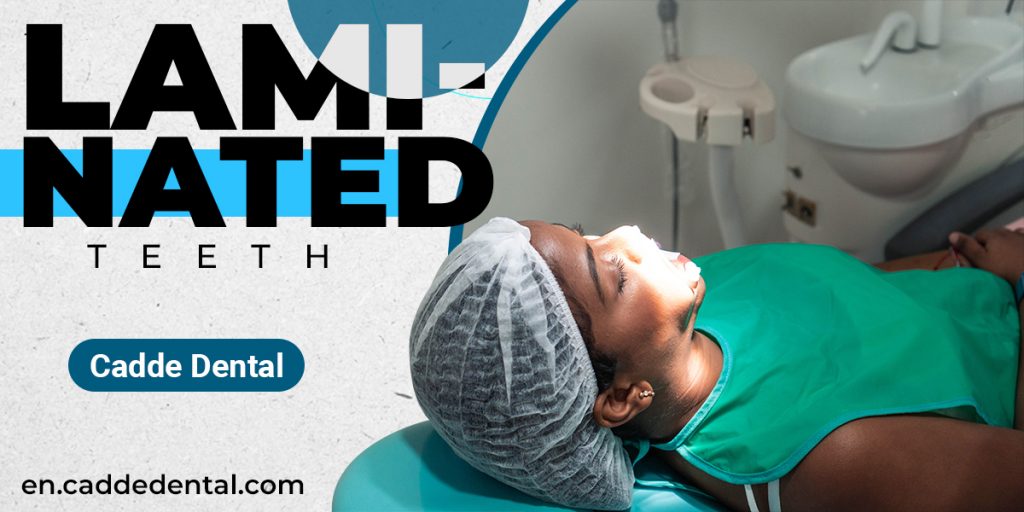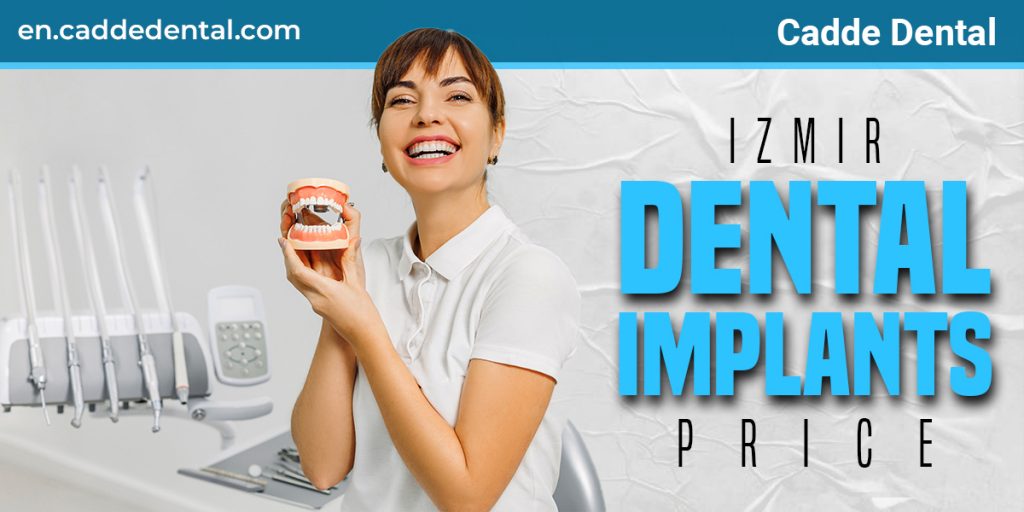Learn Everything About The Treatment Procedure of Laminated Teeth

Ceramic or composite bonded veneers can be used to replace worn, cracked, or otherwise damaged teeth. Diastema closure and tooth contouring are also possible with bonded composite fillings. Dental veneers (dental laminates) are used to restore teeth that have been shortened or worn. Dental veneers are used to repair the function and appearance of teeth that have been damaged. Veneers are frequently composed of lithium disilicate, a reinforced glass-ceramic. Glass ceramic is a useful material for veneers because of its excellent optical and mechanical qualities. Composite restorations, in addition to ceramic veneers, can be used to restore teeth. Composite fillings are used to repair minor dental problems such as decay, fractures, and gaps between teeth (diastema).
Treatment planning
A dental and bite assessment is conducted prior to dental treatment. Other oral illnesses are addressed if necessary before laminates are prepared. X-rays, pictures, and study models of the teeth are examined prior to treatment to design the therapy. Veneers, for example, are developed before treatment and have a certain form and color. Opt for Smile Makeover Turkey treatment from Cadde Dental.
Smile Design
Teeth are unique in shape and are influenced by inherited variables such as gender and ethnicity. Young people’s teeth forms are usually quite noticeable. The anatomic crown width/length of an unworn upper front tooth is around 0.6 to 0.8, indicating that the tooth’s length exceeds its breadth. Teeth become shorter with age due to normal wear and tear.
Restoring front teeth with composite fillings
Gaps Between Teeth
Ceramic crowns and veneers are best suited to circumstances where teeth are severely damaged and a significant change in appearance is needed. Bonded composite restorations are typically used to repair gaps between teeth (diastema) and extend the tooth tips.
Minimally Invasive Treatment
The nicest part about bonded composite fillings is that they don’t require tooth grinding. Teeth are cleansed and the sharp edges of the teeth are smoothed when composite fillings are used. To repair the tooth, the composite filling is glued directly to the tooth. Several layers of various composites are put on the tooth surface for a natural result. This provides the teeth with a more natural appearance.

The Laminated Teeth Procedure
Trimming the tooth
- The enamel on the front side of your tooth is pared down to nearly the same thickness as the veneer that will be applied in this treatment. As a result, its total thickness is not much altered. While trimming your teeth, your dentist will bear in mind some established criteria for the maximum amount of enamel that may be removed in an ideal situation and will aim to stay within those boundaries.
- If you have some decay on your tooth, the dentist will trim it more thoroughly in those spots to remove it.
- Porcelain veneers can be bonded over existing white (dental composite) fillings, at least in principle. Replacing them with fresh ones, on the other hand, helps to ensure the strongest link possible.
- According to Walls’s research, bond strength is best when the new veneer is put within two weeks after the new infill.
- The outline form of the preparation will be shaped in such a way that the veneer’s edges are hidden or lay at a position where opposing teeth come into contact.
- There’s some discussion over whether a porcelain veneer’s edge should terminate just at the tooth’s biting edge or wrap around to the backside. While this is a matter for your dentist to determine, it will impair your experience if no temporary veneers are applied (see below). If the veneer wraps around the back of your tooth, the biting edge will need to be cut somewhat shorter, resulting in a different appearance and feel than previously.

Ask for Izmir Dental Implants Price at Cadde Dental.
Taking the shade
Your dentist will utilize a shade guide to decide which porcelain hue best matches the teeth on each side of the tooth that is being veneered. They can determine that various colors are required for different areas of the veneer. They’ll also make notes regarding which areas of the laminate should be transparent in comparison to others.
Taking the impression
Your dentist will take an imprint of your tooth and its surrounding teeth and gums when the trimming is done. This impression of your mouth will be utilized to create your veneer. There are two methods to make an impression.
Option A – Most dentists will use the impression “putty” or “paste” to take an imprint. Simply said, this is a thick goo that is poured into a tray and squeezed over your teeth. It’s left in your mouth for a few minutes until it’s set, and then it’s taken out. This imprint is then submitted to a dental laboratory, where your porcelain veneer will be created. The turnaround time for this process is normally approximately 2 weeks, depending on the arrangements made.
Placing retraction cord.
Your tooth will most likely have been prepped (trimmed) such that the edge of your veneer tucks neatly beneath the gum line. If that’s the case, they’ll almost certainly place a retraction cord (a string similar to yarn) in the gap between your teeth and its gum tissue before taking an imprint.
- The rope, once in position, pulls the gum tissue away from the tooth.
- Your dentist will then cut the connection just before the imprint is taken.
- The idea is that your gums will be pulled away from your tooth’s surface for a few seconds after the retraction cord has been withdrawn.
- This pause allows the impression material to push into the gap beneath the gum line, capturing the whole range of the tooth’s preparation.
Option B – Your dentist could have a dental milling machine with a camera that can optically capture an imprint of your tooth. Find Zirconium Crowns Cost Turkey at the Cadde Dental Website.

The machine can then grind your veneer from a block of ceramic (synthetic porcelain) in a couple of minutes using this image. The apparent benefit of this approach is that it allows you to have your tooth cut and your veneer bonded in one visit. As easy as this seems, there’s a solid reason why your dentist doesn’t have one of these devices.
- Milled veneers are made from a block of porcelain that is consistently colored.
- Veneers made by a laboratory worker, on the other hand, maybe identified. Layers of porcelain, each with a distinct hue and degree of translucency, can be utilized to build a veneer that closely resembles the adjoining teeth’s features.
Placing a temporary veneer
If your veneer is being created by a dental laboratory, you will often have to wait 1 to 2 weeks for it to be completed. The next question is whether or not you will use a temporary veneer during this time.
The pre-cementation evaluation
Your porcelain veneer has been produced and is ready to be attached to its tooth at this time. Your dentist will remove any temporary veneers that have been applied.
Checking the fit
Your dentist will need to assess how your veneer will fit on your tooth first. They’ll accomplish this by placing it in position, inspecting it, removing it, and trimming it until they’re pleased with the fit.
Evaluating the shape
Even if the laboratory or milling machine that made your laminate shaped it to what it felt was the correct form, you and your dentist may have a different opinion. To make it seem appropriate, certain edges may need to be reduced, squared off, or rounded. If that’s the case, your dentist will make the necessary adjustments.
Evaluating the color
Your dentist will have picked a porcelain hue for your veneer that they believe will match your tooth’s surrounding teeth closely. However, because it’s translucent, the shade of the cement used to secure it may be fine-tuned to get the desired tint.
Bonding the veneer
Your veneer can be glued into place once you and your dentist have established that its form and color are correct. Your dentist will first remove the trial paste and clean and prepare the inside surface of your laminate. They’ll also clean and polish your tooth’s surface so it’s ready to use.

Wrapping things up
The veneer has now been firmly secured to your tooth. Excess cement will need to be scraped and flossed away by your dentist. They’ll also need to assess the contours of your new repair and, if necessary, trim and polish them. Your bite will be checked as the last step to ensure that it has not been affected by the installation of your veneer. You also may avail Turkey Teeth Whitening at Cadde Dental.
The follow-up appointment
They’ll want to see how your gums have reacted to having your new veneer in place. If you feel that its form needs to be tweaked further, they can do so at this visit as well. Some persons may have hot and cold sensitivity as a result of their veneered teeth. If you do, tell your dentist at this appointment. While it’s typical for problems to resolve on their own, they may be able to speed up the process.
Recent Posts
- Learn Everything About The Treatment Procedure of Laminated Teeth
- Signs You Should Notice and Get Your Implants Done – Full Dental Implants Turkey
- All About Dental Braces and What Should You Know Before Getting
- Learn About The Importance and Process of Interdental Cleaning
- How Sugar Can Harm Your Oral Health and How To Deal With It?
Categories
- Aesthetic Zirconium Coating
- Best Dental Clinic in Turkey
- Blog
- Dental Bonding Treatment
- dental implant in Turkey
- Dental Treatment in Turkey
- Full Mouth Dental Implants Cost Turkey
- Full mouth Veneers Cost in Turkey
- General
- Hollywood smile in Antalya
- Hollywood Smile Price in Turkey
- Hollywood smile prices
- Hollywood Smile Treatment
- Izmir Implant Treatment
- Laminated Teeth Application
- Laminated Tooth London
- smile aesthetic London
- Smile Aesthetics in Turkey
- Smile Makeover Turkey
- teeth whitening procedure
- Teeth Whitening Treatment in Turkey
- Teeth Whitening Treatment in Turkey
- Turkey Implant Prices
- Wisdom Tooth Extraction Procedure
- Zirconia Dental Implants
- Zirconium Crowns Turkey
- Zirconium Teeth London



Recent Comments